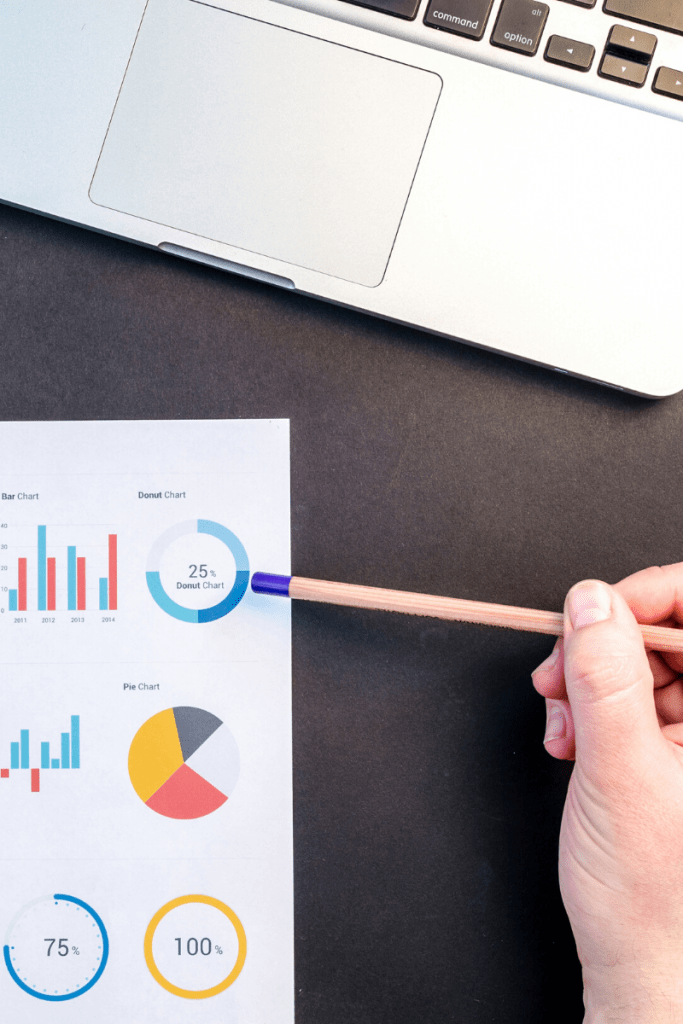
Knowing how to turn digital data into actionable insights can improve your online campaign results and help you meet your goals Collecting and analyzing data should be a key part of your business strategy, and should regularly factor into your overall approach. The better you understand your customers and business, the more targeted and efficient your marketing efforts can be. A good way to do this is to break down your digital data into two groups: quantitative and qualitative.
Quantitative data is anything that can be numerically measured, like the number of people visiting a website or the amount of sales a site makes in a month.
Qualitative data is essentially any descriptive information that you can’t put a number to. This could be people’s opinions about a new product, or the sentiment and language people use on social media when talking about a brand.
If you want to know how people feel about your products or service, take a qualitative approach and ask them directly. If you want to know something quantitative, such as the amount of time someone spends on one of your blog posts, use an analytics tool to review that specific metric. Often, combining quantitative and qualitative data will provide you with a richer overall picture.
Quantitative data can often be pulled from tools such as Google Analytics or from the analytics features offered by most social media platforms. This can be great for finding out information about demographics, search habits, and the journey a customer has taken across your digital assets. Alternatively, qualitative data is often gathered through connecting directly with people, such as having a review section on your website or asking customers to fill out an online survey.
Online data can also be used to complement your offline business approach. For example, offline data like in-store customer surveys can be combined with social media poll results to give you a more detailed picture of customer needs and opinions. This allows you to make informed business decisions – from deciding the time of day to post on social media, to understanding how to improve products or services.
Understing the data cycle
- The data cycle is a popular way to help you make the most of the information collected from various online marketing activities. Use it to help you prepare, action, and inform your business decisions online. The four main stages of a data cycle are: Plan, Do, Check, and Act.
- In the “Plan” stage, the team would identify their goal for this campaign and outline how they plan to promote it. They decide their goal is to see a 25% reduction in commuter traffic over the next three months using search advertising and social media marketing.
- Next up is the “Do” stage of the cycle. This is when the team designs the ads and launches the campaign.
- A few weeks after the campaign has ended, the team measures how many people clicked on the ads and assesses whether the campaign had an impact on the number of people cycling to work. They notice that while the search ads drove a substantial amount of new traffic to the website, very few people saw or engaged with the social media campaign. This insight highlights that the town hall’s social media campaign should be reassessed and optimized for improvements. This is the “Check” stage of the data cycle.
- the “Act” stage reveals where a business can use its findings to improve future campaigns. In this case, the marketing team could decide to vary the social platforms used, review the content they’re publishing, or post at different times of the day and see if these changes help improve engagement.
- Review the information you gather at periodic intervals. This will help you stay aware of any data anomalies that may appear during the year, such as spikes or drops in sales due to seasonal dates like national holidays.
- Tools such as Google Analytics, Adobe Analytics, and Webtrends can provide data on website visits, including pages visited, time spent on site, and whether users have completed a target action, like completing a contact form.
- how do we define an insight? To put it simply, it’s analyzing ‘why’ something has happened. Insights are critical to determine actions and help you focus on what is important to your business goals. An actionable insight takes this analysis one step further and determines what to do next so that you can successfully improve and refine what you’re doing.
- To uncover your own actionable insights, try following these six steps:
- define your goal: Clearly outline what your campaign aims to achieve
- A spreadsheet is defined as an interactive software application designed to help organize, analyze, and store data. Put simply, spreadsheets create a grid of data, using a principle of rows and columns. Once numbers are added to the spreadsheet, you can use automated tools and functions to analyze the information and find the answers you are looking for.
- f you were in charge of collating census information for a town, you could use a spreadsheet to keep track of addresses, names, dates of birth, and how long residents have lived in the town. You could then apply a filter to work out how many people are under the age of four; which would be valuable information to consider when planning school capacity.
- presenting it in a way people understand is essential to getting your message across successfully.
- We all interpret things in different ways. Some people like colorful image-based visuals like graphs and infographics, whilst others absorb numbers and text more easily in tables or lists. Because of this, it is important to base the presentation of your information on the needs of your audience.
- Ask yourself the following questions to help you identify your target audience:- what roles or positions do people in my audience hold? – what level of knowledge does my audience have? and,- which industry does my audience work in?
- Regardless of whether the data is being presented in a meeting or published in a report, overwhelming your audience is the fastest way to lose their attention – so avoid packing in too much information and aim to present it in an easy-to-digest way.
- So, now that you know why it’s important to understand your audience, how do you decide which format to display your data in? When it comes to presentation, always choose a visual format that best displays the story you are trying to tell. For example, if you wanted to present a trend over a period of time, consider a line graph, which makes it clear to an audience how things have progressed or changed over a given period. Here are some other visual formats to try out, and the data that works best with them:
- Pie charts are useful to display percentages or proportional information in an easy-to-digest way.
- Tables can be used to display smaller data sets, allowing for comparisons to be made quickly.
- Bar charts are great for comparing related items in a group, where the length of each bar is proportionate to the value it represents.
- Line graphs are useful for understanding how data changes over time, for example, whether your website traffic has increased over the past month.
- Heat maps are often used to represent a performance by area, such as which parts of your website people are clicking on most.





